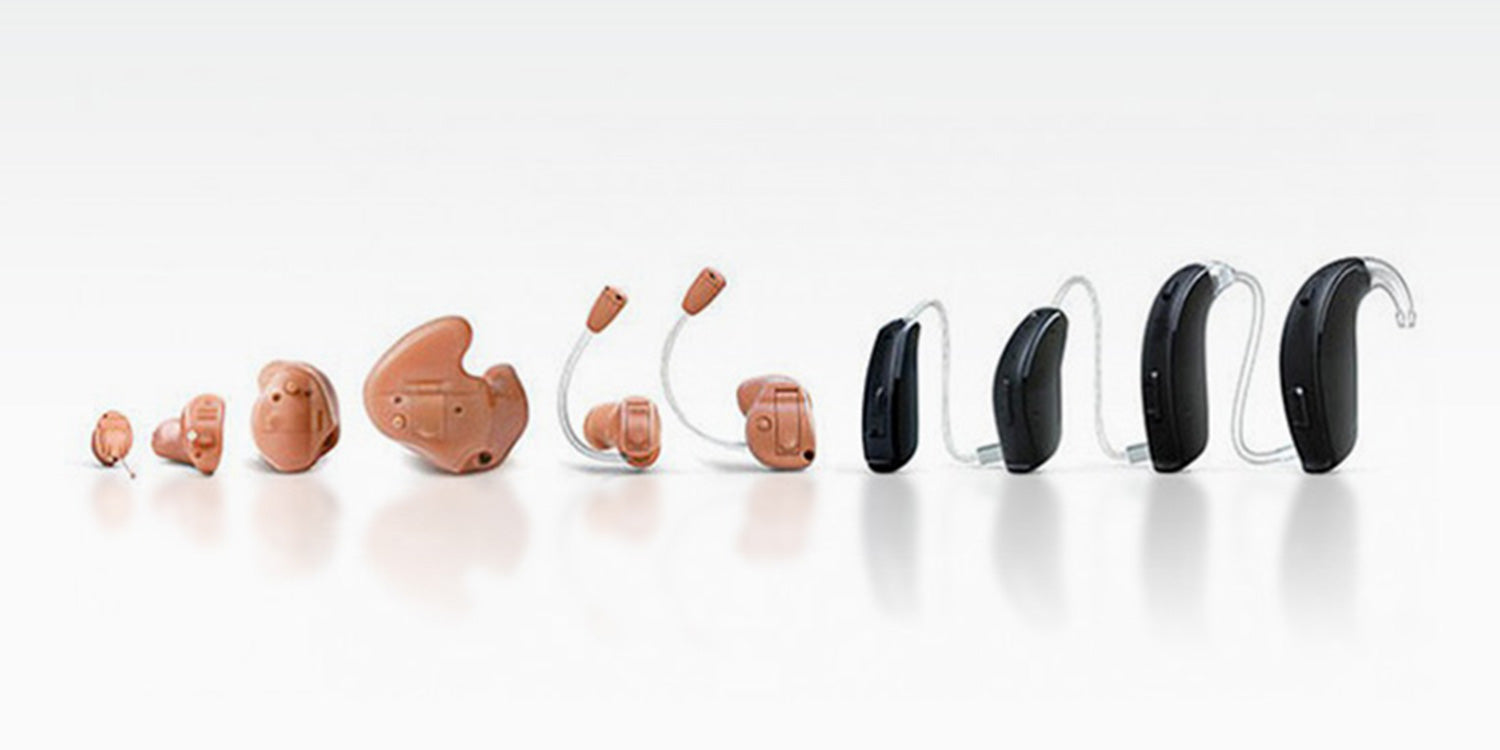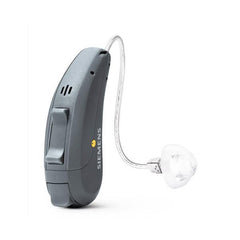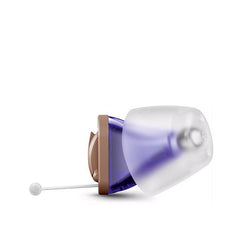
What are the different types of hearing aids? You will often see acronyms like BTE, RIC, CIC when you are looking at types and hearing aids prices. What does this mean to you and me?
These acronyms refer to the body-style of the hearing aid. By body-style, we mean the size and housing of the hearing aid. The general rule to understand is larger the housing of the hearing device, the more amplification (volume) it will provide. So smaller hearing aids are generally suitable for mild to borderline severe hearing losses while larger hearing aids are more suited to moderate to profound hearing losses.

There are other advantages and disadvantages of having hearing aids in different body styles other than for powerful amplification. So let us explain the details here:

Behind-The-Ear (BTE) Hearing Aids
A BTE hearing aid is what people commonly identify as the “beige banana” that is worn behind the ear. It is the most popular style of hearing aid in the world with these advantages:
- Usually has the highest amplification power due to its large receivers and battery capacity
- Is robustly built due to it’s mass production template with strong ability to repel water, dirty, wax and droppages
- It’s larger size makes it easier to handle for seniors who may have arthritic conditions
- It is most suited for children as children have changing ear canal shapes. This means as their ear canals change, the parent can simply have the earmold changed instead of having the whole hearing aid changed. This saves thousands of dollars of cost a year compared with a custom hearing aid for children.

Receiver-In-The-Canal (RIC) Hearing Aids
Sometimes called the RIE (Receiver-In-the-Ear), the RITE (Receiver-In-The-Ear), the RIC device is a variant of the BTE hearing aid with a few key performance upgrades.
- RICs are generally more comfortable than BTEs or ITEs because the inserted receiver end into the ear is covered by a soft, pliant silicone tip which is usually perforated to allow both air (and sounds) to pass directly to the ear drum, unlike the other body styles.
- RICs are usually smaller and aesthetically more acceptable to most user. The thin body profile is able to be hidden almost completely behind the ear and the thin electric insulated wiring to connect the receiver inside the ear to the hearing aid behind the ear, is nearly invisible to the naked eye from the front.
- RIC hearing aids can mostly be collected on the day of purchase, as minimal customisation is required for different users.
- RIC hearing aids come with the most sophisticated feedback control systems, usually offering a hassle free listening experience.

In-The-Ear (ITE) Hearing Aids
ITE hearing aids are the largest of the custom made hearing devices. Their larger size provides more amplification to the user and is also easier to handle for users with dexterity issues.
- ITE hearing aids use larger capacity batteries than small custom hearing aids and a single change of battery can last as long as a BTE (between 12-16 days of usage, 12 hours a day)
- ITE hearing aids are larger and easier to handle than small custom hearing aids. This prevents droppage and easy change of batteries
- ITE comes with a full set of features unlike smaller custom hearing aids which may need to have telecoil or wireless adjustment features taken away due to small size.

In-The-Canal (ITC) Hearing Aids
ITC hearing aids are a good compromise between features and size. Their small profile makes it very attractive for users who wish for an unnoticeable hearing aid.
- ITC hearing aids are very small but can still be equipped with directional microphones (which assist in speech discrimination) and can have a program push button OR volume control mounted on the hearing aid, unlike CIC (Completely-In-Canal) hearing aids

Completely-In-the-Canal (CIC) Hearing Aids
CIC hearing aids are one of the most popular hearing deivces because:
- They are the smallest hearing aids available in the market today. When fitted correctly, they sit deep in the ear canal and cannot be easily seen by others.
- While they have smaller batteries and hence provide lesser amplification, the proximity if the receiver to the eardrum delivers more perceived volume to the user.
- Today’s CIC’s come with many different features to make usage much more convenient than before.

Invisible-In-Canal (IIC) or deep fit CIC Hearing Aids

